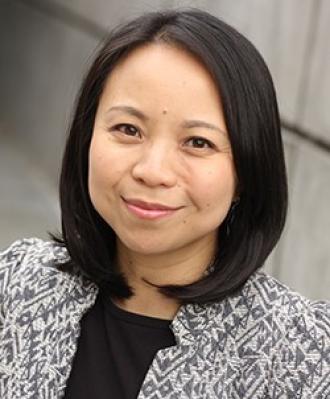Elaine Yau began her postdoctoral fellowship at the Berkeley Art Museum and Pacific Film Archive (BAMPFA) at a fortuitous time in the museum’s history. In 2018, the renowned quilt collector Eli Leon posthumously donated his collection of nearly 3,000 African American quilts to BAMPFA, a contribution that now comprises 15% of the museum’s art collection. This positions BAMPFA to become a center for the study and exhibition of African American quilts, alongside other great collectors such as Souls Grown Deep and Michigan State University’s Great Lakes Quilt Center.
BAMPFA’s newly acquired quilt collection has already received considerable attention from major donors in the art world. In 1989, Leon received a Guggenheim Fellowship to travel through the American South collecting quilts. Now, BAMPFA has received a grant from the Henry Luce Foundation to “support a comprehensive program of cataloging, conservation, research, and exhibition for these holdings.” In an interview with The Daily Californian, Yau explained that in addition to the exhibition and study of the quilts, a large part of the Luce Foundation grant will go toward conducting a conservation survey.
Yau holds a doctorate from UC Berkeley with research focused on the intersection between folk art and modernism, specifically looking at African American art. As the collection’s inaugural curator, she is uniquely poised to assume responsibility for the initial inventory, care and curation of the nearly 3,000 quilts that were previously stored in Leon’s home in Oakland, California.
“Leon was notorious for the way his home was packed to the hilt with quilts,” Yau described. “They were rolled and folded in all degrees of compactness.”
This will be the first, formal curatorial effort to catalogue the collection, with the ambition of preparing the quilts for exhibition in 2023. While there is a tendency for Leon to loom large in the history of the quilts, Yau hopes to recenter the great migration story that connects prolific East Bay quilters such as Rosie Lee Tompkins (née Effie Mae Howard) to the quilting traditions of the American South.
“These artists and their practice are an invitation to rethink aesthetic hierarchies at the center (of mainstream art) and to expand the borders of how art history has typically been run,” she said.
BAMPFA has a long history of collecting in the fields of abstract painting and abstract art. Yau believes that many of the quilts fit into the aesthetics of abstract modernism and can advance the art historical narrative.
It is perhaps a bit curious to imagine quilts — a functional household object, a bed cover — fitting into the aesthetic hierarchies of abstract art. For Yau, however, this is an opportunity to disrupt how the art establishment looks at not just quilts, but also at quilters as well.
“We have to approach quilt makers not just as quaint old ladies sitting on their porch,” Yau explained. “That’s a romantic image. But if we approach them as artists, the intent to create a bed cover is not mutually exclusive from what looks good. I think the process is different for every individual quilt. The most generous and proper way to approach these questions is yes, as artists, quilters are always thinking about the aesthetics of their quilts.”
“There is a long history of quilts being on display,” she continued. “Even if quilts were never immediately destined for the white walls of an art gallery, there were many local contests, whether they were county fairs or hanging quilts over a clothesline, that acknowledge their visuality.”
The visuality of quilts can be both aesthetic and political in nature. One of Rosie Lee Tompkins’ quilts, for example, is an homage to Martin Luther King, Jr. Yau described how Leon displayed the MLK quilt, along with others, by hanging it from a window in his house. Neighbors would set out lawn chairs for a yard show as Leon unfurled quilt after quilt.
“It would kind of be like a drive-in movie, except you were looking at quilts and not a moving picture,” Yau explained.
These different traditions of quilts on display are particularly relevant to Yau as she begins to imagine the 2023 exhibition at BAMPFA. Yau has already co-curated Rosie Lee Tompkins: A Retrospective, which was forced to close due to the COVID-19 pandemic, but the 2023 exhibition will presumably be larger in scale and in the number of artists featured from Leon’s collection.
“Eli’s collection spans makers who are a generation removed from enslavement and emancipation running all the way through the 2000s,” Yau said. “That historical parameter offers an unprecedented way for thinking about quilts in the 20th and 21st century — this amazing cross section. Because Eli collected both in the South and in the Bay Area, there’s also a geographical spread that other more place-based collections might not open out.”
It is too soon to say how Yau will frame the collection, but it will be exhilarating to see how she brings out the many dimensions of Leon’s collection on the white gallery walls of BAMPFA.
Contact Blue Fay at gfay@dailycal.org.
